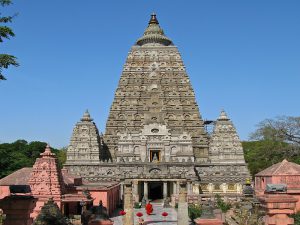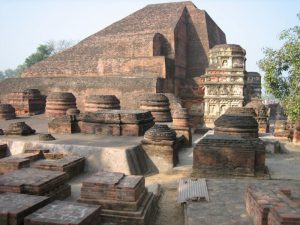Siddhartha Gautama was a young prince born to royalty in Lumbini, an area which is now part of Nepal about 2600 years ago. While growing up he was shielded from all of life’s worries and trepidations since his parents wanted him to grow up to be a strong warrior. He was privy to all of life’s materialistic pleasures and was oblivious to human sufferings and the common man`s pursuit to happiness.
But contrary to the belief of his parents, his eventual encounter with human sickness, suffering and death transformed him to become the most influential evangelist of attaining enlightenment. At the age of 29 he decided to leave his family, his wife and child to embrace the life of monkhood. This was the ultimate sacrifice to renounce all of worldly pleasures and seek to attain the true meaning of life and one`s purpose and the spiritual path to attain true and undying happiness.
It is said that he travelled to the banks of Niranjan river (now Falgu) and sat under a peepal tree till he became the enlightened one or The Buddha or attained Bodhi. This is the place where the Mahabodhi temple is now situated which was built by Emperor Ashoka in 230 BC. At that time Bihar was referred to as vihara or a centre for learning. In 2002, it was recognized as a UNESCO World Heritage site. The 2nd and 3rd centuries were times of great spiritual activation. Citizens from all walks of life had begun to question and seek the true meaning of real and lasting happiness. Hinduism was the predominant religion then, but Buddha renounced it since he experienced sacrificial rituals in it. He travelled far and wide and gathered a group of loyal disciples who joined him. The Buddhist trail in Bihar is a fascinating journey it is almost like one if personally being guided by the Enlighted one himself.
Bodhi: or enlightenment. His travels and teachings influenced the founding of Nalanda, the world`s first university which went on to house 3000 international students and ran successfully for 600 years before being burned down by hostile forces. His influence can be seen far and wide across the entire Asian continent, namely the south east Asian countries of Tibet, Laos, Combodia, Myanmar, Nepal and Vietnam with multiple stupas, erected in spiritual reverence. Stupas set up by the disciples have become a profound symbol of reaching the formlessness from the material world. Replicas of the Bodh Gaya temple have also been erected at Myanmar’s capital of Yangon.
Bodh Gaya is considered as the holiest place for Buddism, so much so that many kings have invested heavily in the restoration of the Mahabodhi temple, such as the king of Myanmar in the 11th century. This is a must visit for everyone who seeks to understand the heritage of this beautiful land along with the values it emanates for the rest of the world. Other attraction in the area include the 80ft Buddha statue, the bodhi tree, the vajrasana or the studded seat where the buddha meditated and
Gaya also allows for Hindi pilgrims to perform pind daan, or prayers to the ancestors especially during the season of pitrupaksha.
Deepti Upendra
Entreprenur and Content Writer



